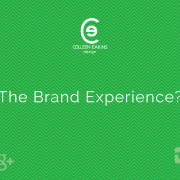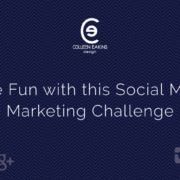User Privacy and Security Concerns Shake Up the Internet
If you’ve been paying attention to recent news, the chances are good that you heard about all the controversy surrounding the ways that major platforms, such as Facebook, collect and share data with publishers, users, and advertisers.
In the wake of these disclosures to the public, and testimony before Congress, Facebook, Instagram, and many other high-traffic websites and mobile apps have had to update and make changes to their terms of service and operating agreements recently.
All you need to do to is check the email address registered with these sites, to find all the notices alerting you to these amendments to their operating agreements.
How Do These Changes Affect Businesses and Marketers?
On Facebook, changes to the terms of service could potentially affect how brands and marketers connect with possible customers and clients. Changes to API access could limit the information provided when making a query.
Additionally, all applications that use the events, pages, and groups API must go through an app review process to assure that they are compliant with the new terms and conditions of the platform.
New restrictions on the Facebook login could also affect third-party providers who log in to their services using a Facebook account. Recently, covert trackers were found to be collecting data transmitted through the login and measures were taken to prevent third-parties from accessing user data including relationship status, education, interests, work history and more. On the Instagram side, the old Instagram API platform is getting deprecated and phased out as part of their current changes to their systems.
Protecting Privacy and Security Online
Privacy and security are two severe pain points for platforms like Facebook. Brands and vendors who built custom Facebook apps or utilized Facebook’s login to manage profiles or provide client services could experience issues with core functionality and usability.
It’s worth noting that while you may not have built your own custom app that integrates with these API calls, many third-party tools used to help with social media profile management rely on API calls to do tasks such as content sharing, replying to comments or messages, and other everyday online communications.
With more oversights, audits, and inquiries into how user data gets collected, shared, and disseminated, companies and individuals who work with clients to help them maintain their digital assets and brands could face more challenges as they implement changes to safeguard user information and protect privacy.
How These Changes Affect Facebook Advertisers
Advertisers who use social media platforms to market to existing and potential new customers could experience some changes in targeting capabilities, and other ad controls that specifically target their preferred client or customer.
When combined with other shifts the company has made in how news and updates get displayed to users, advertisers are well-served to create a strategic content marketing campaign to boost virality and the share-ability of content on these platforms.
What Events Lead to These Changes?
In the last few years, the Internet has empowered people and organizations to share their values, beliefs, and opinions with anyone who is willing to listen. For that reason, more people than ever before began chiming in to try and influence others, especially during a particularly tense political climate.
Twitter revealed concerns over ‘bot activity’ surrounding US election meddling and responded by changing their API to limit or restrict API access.
These election bots were said to have been used to help mold and form the political opinions of users, as well as engage with others using the social networking application and website.
Additional scandal at Twitter includes employees getting caught on video making negative ‘off the record’ remarks about users and the internal policies. (Their comments were not representative of Twitter management.) As a result of these ‘off the record’ remarks, the platform has faced scrutiny from users who claim that they are being censored by the platform for their views.
Twitter politics aside, these API changes most likely won’t affect the average platform user, changes to the API could throttle usage for businesses and agencies who use tools not aligned with the updated terms and conditions of the platform.
Most of the mainstream social media management tools, such as HootSuite and others, are whitelisted so as long as you are following all the rules there should be very few issues with using them to manage clients’ social media pages.
Klout is No More
In the wake of the upcoming updates to the Data Protection Directive regulations, Klout, a site that tallied the score of the influence and importance in their social media circles announced they were shuttering the site on May 25, 2018.
As part of their scoring algorithm, users had to grant third-party access to all their social sites including Twitter, Facebook, Pinterest, and others. Using all of this collated information, Klout issued the user a score from 1 – 100, with 100 being the highest score possible.
Now, all those scores are being set to zero as the site that was sold for $200M a few short years ago, is put into sunset mode forever.
Keep an Eye out for Terms of Service Updates
Changes to the General Data Protection Regulation, in effect since April 2016, will begin superseding the Data Protection Directive on May 25, 2018. Changes will be made to website’s Terms Of Service to abide by the updated specifications.
For companies who are updating their Terms of Service, this offers them the opportunity to ask users to agree to their terms, as well as verify their membership at their site.
As you can imagine, this verification process is helpful for platforms to identify inactive, fake, robotic, or unclaimed accounts. Active users who confirm their account will be counted accurately by management. Inactive, unverified, or robotic accounts will be scheduled for review or deletion, saving liability, space, and resources for the company.
The only thing that remains the same is change. If you are receiving numerous terms of service agreement emails, this is the reason why!

I’m a Digital Marketer & Freelance Writer with a penchant for all things forward-thinking and positive. I’m a fan of abundance and progress.


 ©2018, Colleen Eakins Design
©2018, Colleen Eakins Design ©2018, Colleen Eakins Design
©2018, Colleen Eakins Design ©2018, Colleen Eakins Design
©2018, Colleen Eakins Design ©2018, Colleen Eakins Design
©2018, Colleen Eakins Design ©2018, Colleen Eakins Design
©2018, Colleen Eakins Design